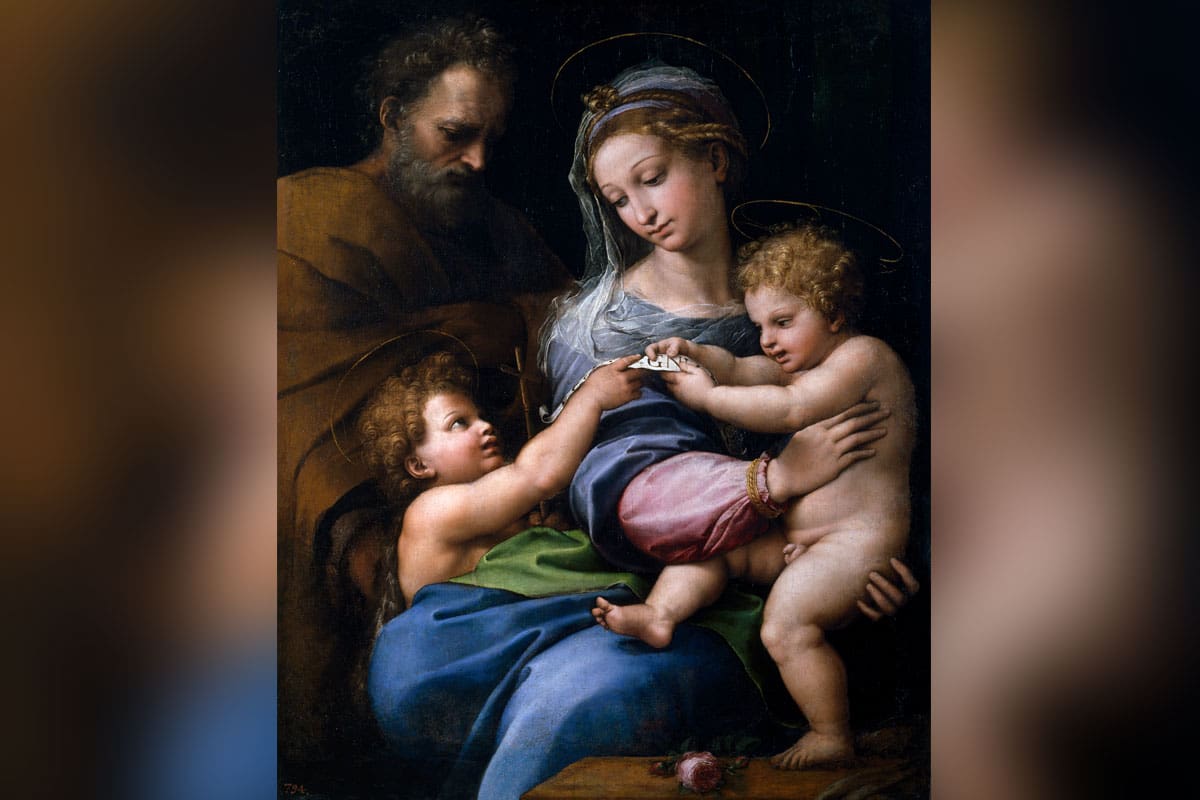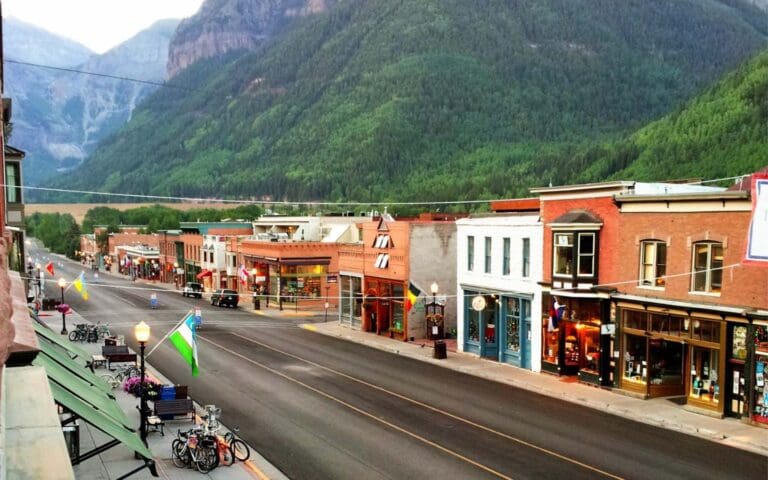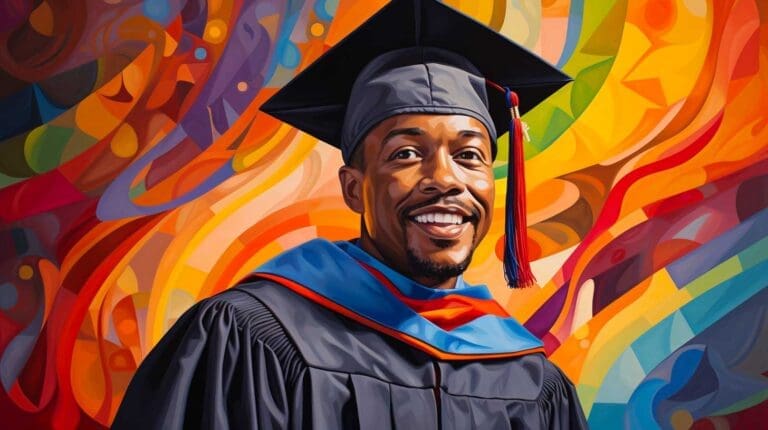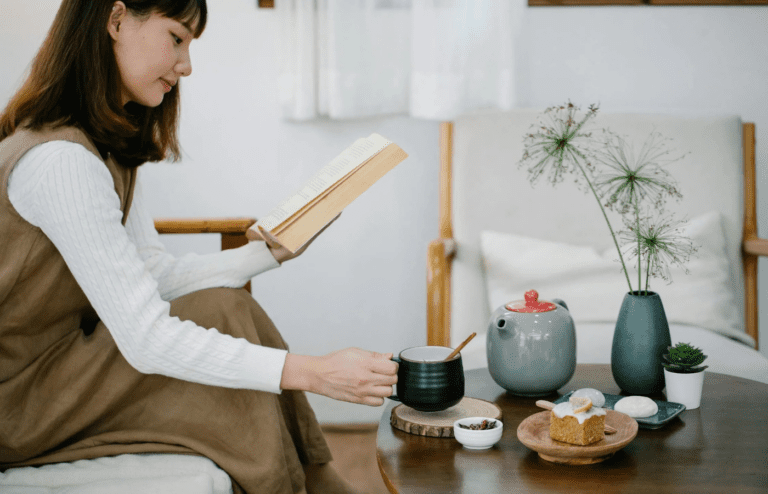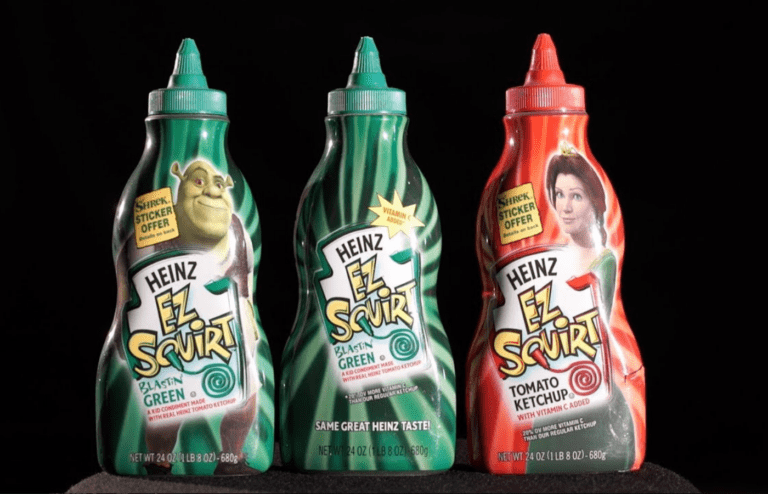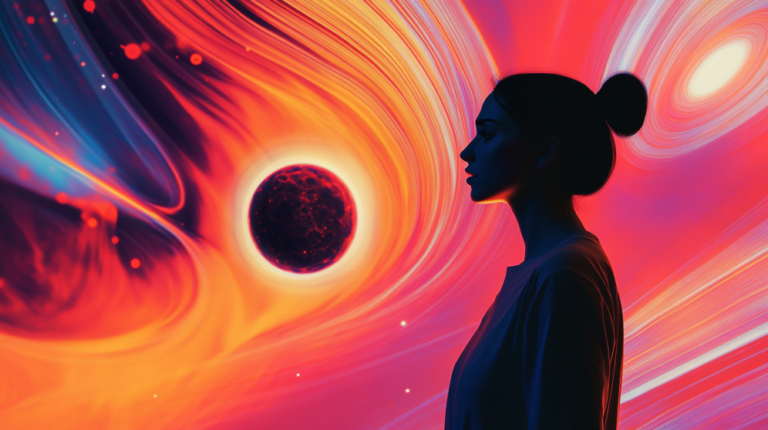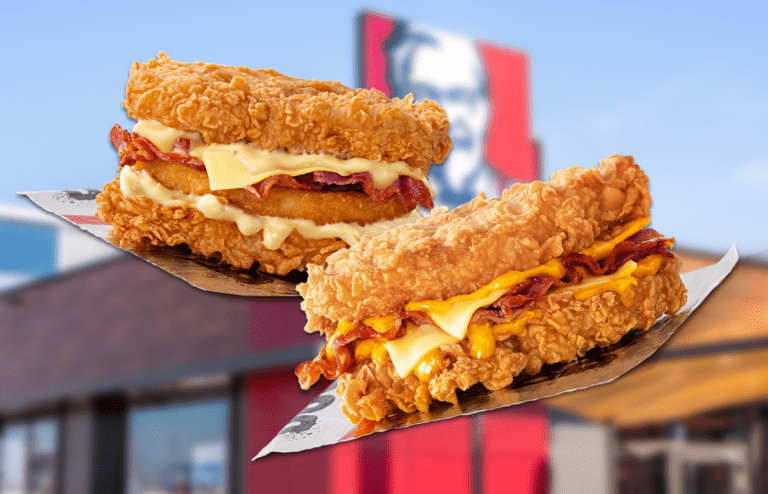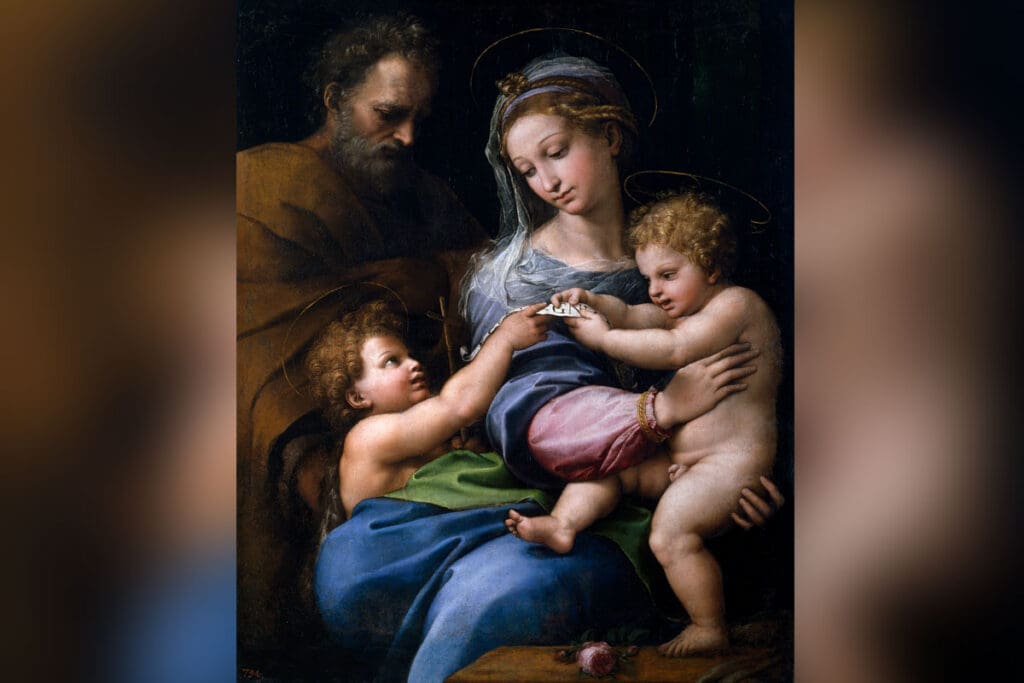
It’s a mystery and debate going back centuries. Who painted the Madonna of the Rose (Madonna della Rosa)?
The painting, estimated to have been completed sometime between 1518-1520, currently resides in the Museo del Prado in Madrid. The work has long been attributed to Italian Renaissance painter Raphael (Raffaello Sanzio da Urbino), born in 1483. Rafael, along with Leonardo da Vinci and Michelangelo, are considered to be the Trinity of great masters from the High Renaissance period.
The Madonna of the Rose depicts Mary, Joseph, Jesus, and a young John the Baptist. At the bottom of the painting, off-center to the right lies a pink rose. Art historians have been debating since the 19th century on whether Raphael was indeed the artist behind the work.
There are a couple of features of the painting that art historians say don’t necessarily match the style of Raphael. They claim the figure of Joseph doesn’t look like the work of the Renaissance painter.
Then there is the version of this painting that differs from the first. Although this second version is autographed, it does not contain the rose at the bottom, nor the wooden strip upon which the flower sits in the first version.
Read More: The Top 10 Unsolved Mysteries That Baffle Historians
Art Historians Have Remained Baffled
Some art historians believe the section at the bottom containing the rose and wooden strip was painted by someone else.
Some believe the lower portion of the painting and the rose were added at a later date by an unknown artist. And quite possibly, this artist may have painted the figure of Joseph as well.
Although the artist is unknown, art historians have some educated guesses as to who potentially did the additional work — if not all the work — for the Madonna of the Rose instead of Raphael. Some believe it may have been Giulio Romano, a pupil of Raphael. Romano went on to achieve recognition for his contributions that helped define the sixteenth-century art style known as Mannerism.
Romano, along with Perino del Vaga, continued the completion of the commission for the work of the Raphael Rooms at the Vatican after the Renaissance master died in 1520.
So the question remains… did Raphael paint the Madonna of the Rose? Is it possible that Raphael received collaborative assistance from someone else, perhaps Romano? Artificial intelligence was tasked with finding the answer and has reached a conclusion…
AI Unravels the Mystery of the Madonna of the Rose
Artificial intelligence has proven to be very adept in many areas. So much so, that AI is actually better and more efficient at some tasks than humans are. Among these are making some medical diagnoses, not only more quickly, but more accurately than physicians.
One of the areas AI excels in is data analysis and the identification of patterns and trends. This ability makes AI particularly suited to analyzing artwork for authenticity.
AI can study the works of a particular artist at a microscopic level, noting fine details in brushstrokes, tonal values, color palettes, and hues. It can then compare these across works to complete a profile of the artist.
AI Studies the Works of Raphael
Professor Hassan Ugail at the University of Bradford developed an algorithm by training AI on 49 uncontested works by Raphael. The professor said the AI was then able to identify authentic pieces of Raphael with 98 percent accuracy.
Next, the professor and his colleagues did an initial test of the AI algorithm on The Madonna of the Rose to determine if it was an authentic work by Raphael.
In the initial test, the researchers say that the AI was unable to give a conclusive answer. However, AI did conclude a 60% chance that the painting was the work of Raphael.
Did Raphael Paint the Madonna of the Rose?
As it turns out, the 60% probability translated to a finding that Raphael undoubtedly painted some sections but possibly not all.
It seems the section that art historians have always questioned as being Raphael’s work — the face of Joseph — was also doubted by AI.
The researchers ran a more detailed section-by-section analysis of the painting and found that Joseph’s face didn’t appear to match Raphael’s style.
“The AI program analysis of our work has demonstrated conclusively that whereas the three figures of the Madonna, Christ Child, and St John the Baptist are unequivocally painted by Raphael,” said Howell Edwards, Bradford emeritus professor of molecular spectroscopy and co-author of the study. The figure “of St Joseph is not [painted by Raphael] and has been painted by someone else – possibly by Romano, as believed by Zur Capellen and others.”
Professor Ugail has released the code for his algorithm, so it is available to the public to replicate. The professors hope that future researchers will apply the same technique to the work of other artists.
The results of the AI study of Raphael’s The Madonna of the Rose were published in the journal Heritage Science.

